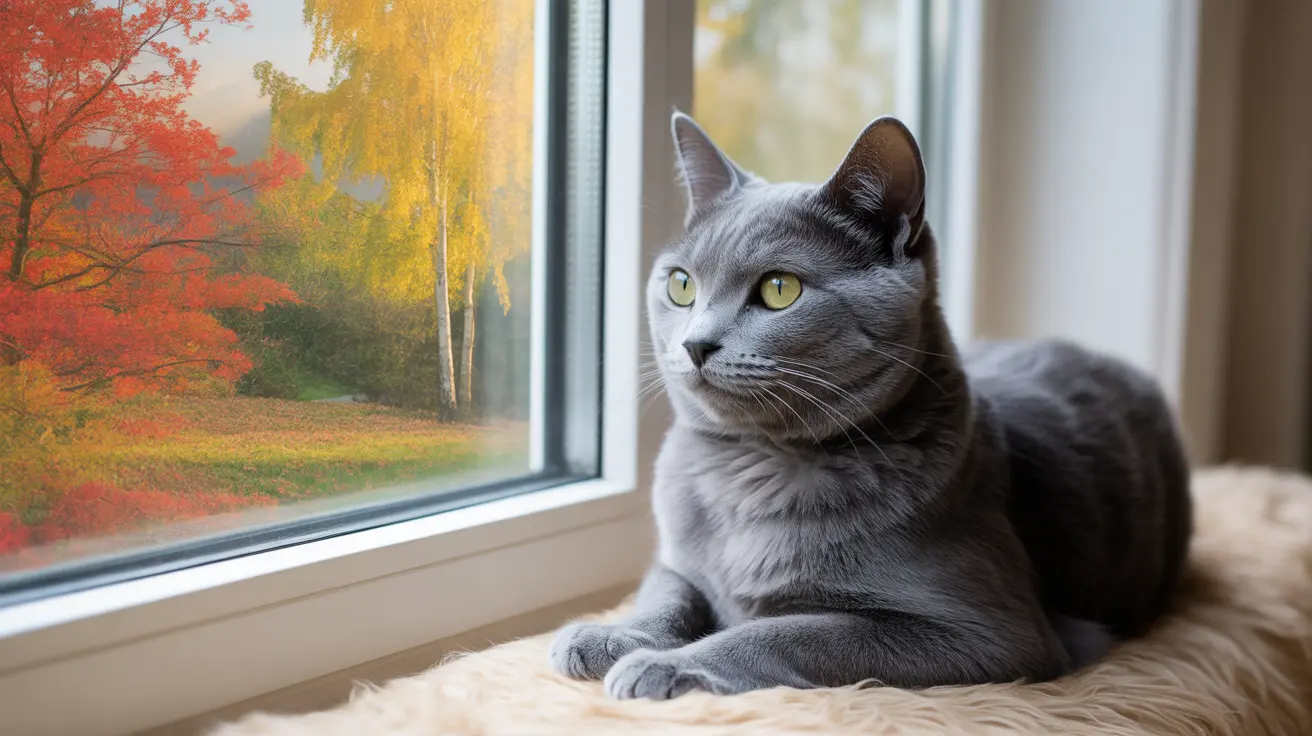The Development of Russian Blue Eye Color
Like all kittens, Russian Blues are born with blue eyes. However, their eye color undergoes a remarkable transformation during their first year of life. This process begins around four months of age, with the green color gradually emerging from the outer edges of the iris and working its way inward.
During this transition period, you might notice your kitten's eyes going through various stages, including a yellowish or "muddy" green phase. This is completely normal and part of the natural development process. By the time they reach their first birthday, most Russian Blues will have developed their characteristic vivid green eyes.
Genetics Behind the Green Eyes
The stunning green eye color in Russian Blues is the result of specific genetic factors, primarily involving the MCOP and CEP290 genes. These genes control iris pigmentation and pigment distribution, creating the breed's signature emerald hue. A particular mutation in the MCOP gene results in reduced iris pigmentation, leading to the development of green eyes instead of yellow or copper colors seen in many other cat breeds.
Breed Standards and Show Requirements
For show-quality Russian Blues, the intensity and clarity of their green eyes are crucial factors. The Cat Fanciers' Association (CFA) and other major cat registries require vivid green eyes as part of the breed standard. In fact, eye color can account for up to 10 points in show scoring, making it a significant factor in competition.
Cats with yellow, amber, or other non-green eye colors are considered to have faults according to breed standards, though this doesn't affect their ability to be wonderful pets. These variations might indicate mixed breeding or genetic diversity in the cat's background.
Maintaining Healthy Eyes in Russian Blues
While the green eye color is genetic, maintaining overall eye health can help ensure your Russian Blue's eyes remain bright and vibrant. Regular veterinary check-ups, a balanced diet rich in nutrients, and keeping the area around the eyes clean all contribute to maintaining those striking emerald eyes.
Environmental factors can also affect how your cat's eye color appears. Natural lighting tends to showcase the green color best, while artificial lighting might make the eyes appear differently. This is why cat shows often use specific lighting to ensure fair judging of eye color.
Frequently Asked Questions
Why are Russian Blue kittens born with blue eyes that later turn green?
All kittens are born with blue eyes because the melanin (pigment) in their irises hasn't fully developed. In Russian Blues, the eyes gradually change to their permanent green color as the cat matures and their genetic programming takes effect.
How can I tell if my Russian Blue has the correct emerald green eye color for show standards?
Show-quality Russian Blues should have vivid, bright green eyes without any hints of yellow or amber. The color should be uniform throughout the iris and appear distinctly emerald in natural lighting.
What genetic factors influence the distinctive green eye color in Russian Blue cats?
The green eye color is primarily influenced by the MCOP and CEP290 genes, which control iris pigmentation and pigment distribution. A specific mutation in these genes results in the characteristic emerald green color.
Can Russian Blues have eye colors other than green, like yellow or amber, and what does that mean?
While some Russian Blues may have yellow or amber eyes, this is considered a deviation from breed standards. Such variations might indicate mixed breeding or genetic diversity, though these cats can still make wonderful pets.
How long does it typically take for a Russian Blue cat's eyes to develop their full green color?
The transformation from blue to green typically begins around 4 months of age and continues until the cat is about one year old. The final, rich green color usually stabilizes by their first birthday.
Understanding the unique characteristics of Russian Blue eye color helps us appreciate not only their beauty but also the complex genetics and development that create this stunning feature. Whether you're considering showing your Russian Blue or simply enjoying them as a companion, their emerald green eyes will continue to be one of their most cherished traits.






